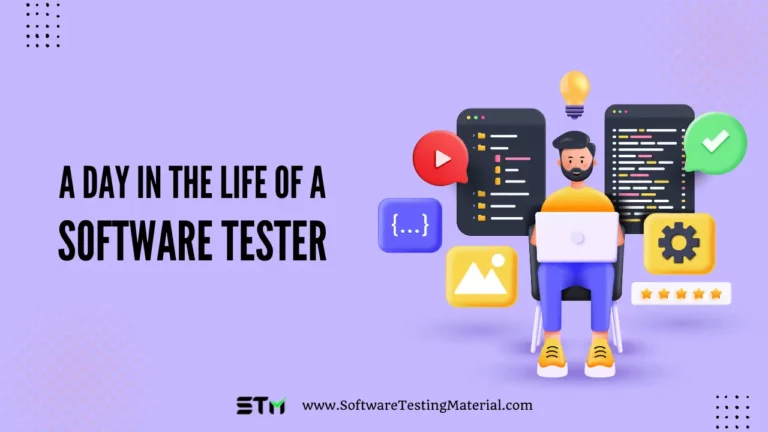The Role of QA Testing in Custom Software Development
The digital environment requires software systems to achieve more than basic operation. Through custom ERP solutions, organizations can create operational tools that satisfy their particular operational requirements and customer needs and business targets. The success of any innovative software concept depends on quality assurance (QA) testing as its fundamental requirement.
The Role of QA Testing
QA testing serves as the fundamental element which supports both dependable and expandable software solutions. The testing process ensures that all system features work properly while users have seamless interactions and the system operates steadily in real-world usage conditions. A well-designed QA strategy functions as an essential requirement for new platform launches and existing product improvements because it determines project success or results in expensive delays.
QA in Custom Product Development
The process of custom product development requires QA testing to become essential. Custom products differ from standard software solutions because they receive individual development from the ground up to match particular business requirements. Every person has unique characteristics which generate security risks through different types of threats. The entire QA testing process helps developers find system problems at the start of development which leads to enhanced system security and product quality maintenance from the beginning of development until completion.
The development of custom software needs QA testing to function as its fundamental requirement.
The Business Need for QA
Businesses that choose custom solutions require their implementation to be error-free. A solitary bug or performance problem results in customer loss and revenue decline and damage to company reputation. The Tricentis report shows that software failures result in $1.7 trillion annual economic losses while industries experience more than 300 major system failures.
The QA testing process detects potential losses through verification of all software product components which include code functionality and user interface operations. The process allows businesses to create products that fulfill actual customer needs which establishes a direct connection between product development and user satisfaction.
Ensuring Software Reliability
Any software depends heavily on reliability as its fundamental success requirement. The testing process of QA ensures that applications work properly on all devices and operating systems under various usage conditions. The custom logistics application of FedEx or DHL needs to process thousands of data points with absolute precision. The systems operate dependably under maximum capacity conditions through QA testing.
Enhancing Security
Cybersecurity is non-negotiable in modern software development. QA testers perform security testing to identify system vulnerabilities which attackers would otherwise exploit. The testing process verifies SQL injection vulnerabilities and cross-site scripting attacks and protects against data breaches. PayPal and Shopify show the critical link between security and testing by dedicating major resources to QA testing which defends user financial information.
Improving User Experience
No matter how powerful a piece of software is, if it frustrates users, it fails. The website testing process through QA enables users to navigate the site without problems while preserving basic visual aspects and easy-to-use interface elements. The user experience development process at Airbnb and Netflix depends on continuous usability and regression testing which serves as a model for all business organizations.
QA Throughout the Software Development Lifecycle (SDLC)
Quality Assurance (QA) needs to execute its fundamental duties throughout all stages of the software development lifecycle.
The process of QA testing runs continuously throughout the entire Software Development Lifecycle (SDLC) instead of functioning as a single endpoint.
Early Involvement in the Planning Phase
The implementation of QA at the start of development work prevents design errors which would otherwise require expensive rework. The testing process requires testers to collaborate with developers and product owners for defining acceptance criteria and test objectives and risk identification.
Testing During the Development Phase
The testing process requires developers and testers to collaborate for unit testing and integration testing to validate that all components operate correctly and maintain proper system communication. The team uses this method to detect problems before they become major issues.
System Testing and Pre-Launch Validation
The QA team conducts system testing on the almost finished product through simulations which replicate actual usage conditions. The testing phase consists of performance testing and load testing and stress testing to determine system behavior under heavy usage. The deployment process requires User acceptance testing (UAT) to confirm that all customer requirements exist in the finished product.
Post-Deployment QA and Maintenance
Quality assurance operations maintain their activities after a product becomes available to consumers in the market. The software maintains stability throughout time because ongoing testing detects fresh system bugs which emerge from system updates and external modifications. Microsoft and Salesforce along with other companies run continuous quality assurance testing to preserve product excellence between different versions and platforms.
Types of QA Testing in Custom Software Development
A complete QA strategy uses different testing methods to verify that software functions properly and its user interface operates as expected.
Manual vs. Automated Testing
Manual testing involves human testers who execute test cases through manual methods without depending on automated testing tools. The method produces its most effective results when used for exploratory and usability testing because these activities require human assessment.
The testing process includes manual testing which requires human operators to perform checks and automated testing which runs tests through tools such as Selenium and JUnit and TestComplete. The implementation of automation technology leads to better operational efficiency for regression and performance testing operations.
Functional Testing
The testing process verifies that all system features operate correctly. The system needs to show the selected products with their prices correctly to users who want to add items to their cart. The required behaviors get tested through functional testing.
Performance Testing
Performance testing evaluates responsiveness and stability. The system design allows the application to run at maximum capacity when dealing with the projected user volume. Amazon performs thorough performance testing before Prime Day to stop system breakdowns during times of maximum customer demand.
Security Testing
Security testing enables organizations to identify vulnerabilities while confirming their compliance with GDPR and ISO 27001 data protection standards. The protection of user data stands as a critical requirement for fintech and healthcare applications because they handle sensitive information.
Usability Testing
The process of usability testing determines the simplicity with which users can use the software for navigation and interaction. The platform delivers vital information about design changes which lead to improved user retention and better engagement.
Regression Testing
New features added to the system undergo regression testing to verify that all previous functions continue working correctly. The maintenance of custom applications needs this approach to achieve successful long-term upkeep.
Benefits of QA Testing in Custom Software Development
QA testing delivers vital benefits to all custom software development initiatives.
Reduced Development Costs
The initial expenses of testing will lead to lower costs in the long run. The IBM Systems Science Institute found that fixing a bug after release costs up to 100 times more than resolving it during development. QA testing helps organizations save money through the identification of issues at the beginning of the development process.
Faster Time-to-Market
With continuous integration and automated testing, QA accelerates release cycles. The system lets businesses deploy updates rapidly to stay competitive in the market while keeping their products at a high standard.
Higher Customer Satisfaction
The operation of software without issues leads customers to take notice. Reliable performance together with fast load times and flawless operation creates trust which leads to customer loyalty and a positive brand reputation.
Scalability and Future Growth
Well-tested software can evolve easily. The QA process ensures that the system base maintains enough strength to support future feature implementations and user expansion and integration needs which results in sustainable business success.
The Human Side of QA: Collaboration and Communication
The execution of QA testing requires more than technical skills because it depends heavily on team collaboration. The most successful QA teams maintain continuous communication with developers and designers and stakeholders. The team members keep problems open to discussion while they propose solutions and decide which solutions to prioritize based on user impact.
The collaboration method at Spotify uses “squad-based” teams which combine testers with members from various departments. This agile approach shortens feedback loops and keeps everyone aligned with the project’s goals.
The main goal of effective QA work consists of achieving success for the entire team rather than simply identifying system breakdowns. The development process achieves better quality results when teams work together with QA as an integral part instead of viewing it as an obstacle to advancement.
Challenges in QA Testing for Custom Software
Managing Complexity
Each custom solution requires its own set of business logic and integration and workflow rules. The assessment of complex systems requires both deep understanding of the subject matter and flexible testing systems.
Keeping Up with Rapid Changes
The Agile and DevOps methodologies allow teams to perform regular product releases. QA teams should implement automation and continuous testing methods to handle the shorter development cycles because they need to adjust their processes.
Balancing Cost and Coverage
The process of complete testing requires significant financial resources. Quality assurance and project budget need to be balanced by teams.
Future Trends in QA Testing
Software development through time leads to corresponding changes in quality assurance practices. The industry faces multiple emerging trends which transform its operational environment.
AI and Machine Learning in QA
AI tools use predictive analytics to identify system vulnerabilities before they happen and create advanced test cases and handle extensive data sets at high speed. Google and Meta operate as two companies which use AI technology to enhance their QA testing processes for achieving better results and minimizing human mistakes.
Continuous Testing in DevOps
The implementation of QA within the CI/CD pipeline through continuous testing allows developers to perform immediate verification of their code changes. The system now releases software more quickly while maintaining operational stability.
Cloud-Based Testing Environments
Organizations that operate with remote teams and distributed architectures can use cloud testing platforms like BrowserStack and Sauce Labs to achieve scalable cost-effective cross-platform testing.
Conclusion: QA as a StrategicAdvantage
The competitive custom software development environment needs QA testing to function as a strategic tool which extends past its technical purpose. The process verifies that custom-built solutions achieve their performance and reliability targets and meet user requirements.
The QA testing process protects your investment throughout its complete life cycle from planning through post-launch support which results in better brand trust and customer confidence. User expectations have reached an all-time high so custom product development requires mandatory integration of strong QA systems.
Organizations which implement QA as an ongoing team effort will become leaders in digital innovation because they create dependable software experiences.





